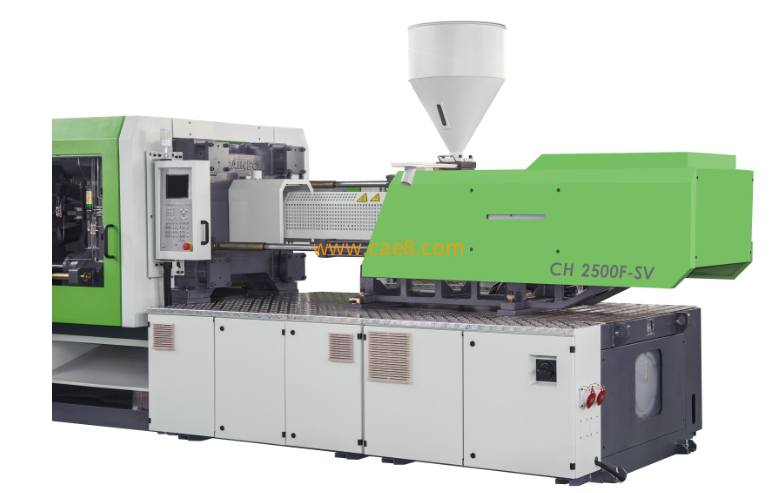Scan QR code and communicate with project manager
We look forward to your voice on wechat 24 hours
Business consulting/Technical consultation/ Technical consultation/ Technical consultation
The working principle of injection molding machineThe working principle of the injection molding machine is similar to that of the syringe used for injection. It is a process in wh

The working principle of injection molding machine
The working principle of the injection molding machine is similar to that of the syringe used for injection. It is a process in which the plastic that has been plasticized in a molten state (that is, viscous flow state) is injected into the closed mold cavity with the help of the thrust of the screw (or plunger) and the product is obtained after curing. Injection molding is a cyclic process, each cycle mainly includes: quantitative feeding - melting plasticization - pressure injection - mold cooling - mold opening and removing parts. After removing the plastic part, the mold is closed again for the next cycle. Injection molding machine operation items: injection molding machine operation items include control keyboard operation, electrical control system operation and hydraulic system operation three aspects. The selection of injection process action, feeding action, injection pressure, injection speed, ejection type, monitoring of the temperature of each section of the cylinder, adjustment of injection pressure and back pressure, etc.
The general molding process of screw injection molding machine is: First of all, granular or powdered plastic is added into the barrel, and the plastic becomes molten by rotating the screw and heating the outer wall of the barrel. Then the machine moves the mold closing and injection seat forward, so that the nozzle is tight to the gate of the mold, and then the injection cylinder is fed with pressure oil, so that the screw is pushed forward, so that the molten material is injected into the closed mold with a low temperature at a high pressure and a fast speed. After a certain amount of time and pressure maintenance (also known as pressure holding), cooling, so that it solidifies and forms, the mold can be opened to remove the product (the purpose of pressure holding is to prevent the reflux of the molten material in the mold cavity, to supplement the material in the mold cavity, and to ensure that the product has a certain density and dimensional tolerance). The basic requirements of injection molding are plasticizing, injection and molding. Plasticization is the prerequisite to achieve and ensure the quality of molded products, and in order to meet the requirements of molding, the injection must ensure that there is sufficient pressure and speed. At the same time, due to the high injection pressure, a correspondingly high pressure is generated in the mold cavity (the average pressure in the mold cavity is generally between 20 and 45MPa), so there must be a large enough closing force. It can be seen that the injection device and the mold device are the key components of the injection molding machine.

The complete injection process includes:
1. Preparation before forming; 2. Injection process; 3. Post-processing of products.
Preparation before molding
In order to make injection molding smoothly and ensure product quality, a series of preparatory work such as raw material pretreatment, cleaning cylinder, preheating insert and selection of release agent are required before production.
Injection process
The injection process generally includes: feeding - plasticizing - injection - cooling - stripping.
Material:
Because injection molding is an intermittent process, quantitative (constant volume) feeding is required to ensure stable operation, uniform plastic plasticization, and ultimately high-quality plastic parts.
Plasticize:
The process in which the molding material is heated, compacted and mixed in the injection machine barrel to change from a loose powder or granular solid into a continuous homogenized melt.
Injection:
Starting from the metering position in the barrel, the plunger or screw applies high pressure through the injection cylinder and piston to pass the plasticized plastic melt through the barrel
The process by which the nozzle of the front end and the pouring system in the mold are quickly fed into the closed mold cavity. Injection can be subdivided into three stages: flow filling, pressure retention and shrinkage, and reverse flow.
CD:
When the plastic in the pouring system is frozen, continued pressure retention is no longer necessary, so the plunger or screw can be returned to discharge the plastic in the stripper cylinder
The pressure of the material melt, and the addition of new material, while the cooling medium such as cooling water, oil or air is passed into the mold to further cool the mold, this stage is called the cooling after the gate freezing. In fact, the cooling process begins from the injection of the plastic melt into the cavity, which includes the period of time from filling the mold, holding the pressure to the time before stripping.
Demould:
The mold can be opened when the plastic part is cooled to a certain temperature, and the plastic part is pushed out of the mold under the action of the pushing mechanism.
Common two-stage injection molding process
In order to solve complex injection molding problems and stable production, the injection molding process should:
Minimize the difference between each mold
Process stability
The viscosity of the material is consistent when it is formed
The viscosity of the material is consistent in each mode switching position and during switching
To maintain this stability, the injection stage usually uses speed control, the faster the speed, the lower the viscosity of the material. When the injection reaches 95% to 99%, switch to pressure holding, and pressure control should be used at this time.
When injected to 95% to 99%, the end of the mold cavity is not completely filled with plastic, but the plastic in the mold cavity begins to cool and shrink at the same time. That said, V/P switching is very unstable.
Multi-stage injection molding process
As with the two-stage molding process, the stability of the process needs to be maintained. In addition, the three-stage molding process is characterized by: the switching point is slightly advanced, the injection is completed and the feeding stage is entered, until the cavity is filled to 99% and the pressure is maintained. The pressure retention is only to counteract the pressure in the cavity until the gate is closed.
In this way, a new process is formed: the injection stage (speed control), the feeding stage (speed control) and the pressure holding stage (pressure control). The feeding stage covers the unstable switching action, making the molding process more stable.
Injection molding machine injection one stage, two stages, three stages and other multi-stage injection principle
1. The first injection glue is injected at a low speed, the material is circulated through the area around the gate to prevent jet flow, and the second phase of the injection rate is increased to fill the mold hole to shorten the time for the plastic flow to the end of the gate, so that the plastic viscosity in the filling is maintained at the minimum curing, but it is difficult to control the correct pressure holding switch point in high-speed injection, so it is necessary to use multiple stages of deceleration to effectively control the pressure holding switch point.
2. The injection glue is divided into multiple sections in order to facilitate the adjustment of the injection process, and the specific adjustment needs to look at the product material and product structure.
3. Use electro-optical control to direct the flow proportional valve in the oil pressure system to obtain the ejection speed at one point instantly to achieve the segmented ejection rate.
The advantages of the three-stage process are:
More stable feeding phase
Better control of plastic filling, eliminating the quality problems caused by stress and overfilling
More suitable for cavity pressure control
Application value of multi-stage injection molding:
(1) The same finished product can be formed with smaller clamping force, which can extend the life of the machine and mold;
(2) segmented deceleration Grasp the correct pressure holding switching point can effectively ensure the stability of quality;
(3) When the molding plastic flow is too good, to prevent the generation of raw edges to take low-speed shooting glue, but not make the raw material cooling and curing as the principle, to melt the resin through the meat thickness and then increase the shooting rate quickly filled the mold hole, Flow marks (streaks of molten grease gradually centered on the gate) are caused by the junction between the initial flow of resin into the mold and the subsequent flow of resin that cools too quickly.
(4) The rubber inlet (that is, the gate) part of the molding is thick, the shooting rate is too fast will cause turbulence, cold material is easy to remain in the channel and form a flow mark, so it should be slow and low pressure into the glue to open the cold head, so that the plastic behind the smooth entry.
(5) In injection molding engineering, the nozzle part is in contact with the mold because the mold cooling water cooling temperature is low, some of the heat is taken away by the mold, and the nozzle is easy to produce cold material heads, which are shot into the mold, and will block at the gate and cause streamlines or silver strip marks.
(6) Precision small parts, the gate size is fine, and the gate balance production of multi-digital mold holes is very difficult, and the gate can be overcome by opening the same size and using multi-stage injection technology.

We look forward to your voice on wechat 24 hours
Business consulting/Technical consultation/ Technical consultation/ Technical consultation